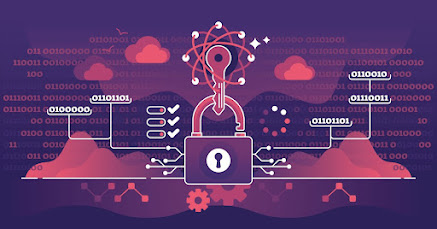Quantum cryptography (also known as quantum encryption) refers to various cybersecurity methods for encrypting and transmitting secure data based on the naturally occurring and immutable laws of quantum mechanics.
While still in its early stages, quantum encryption has the potential to be far more secure than previous types of cryptographic algorithms and is even theoretically unhackable.
Unlike traditional cryptography, which is built on mathematics, quantum cryptography is built on the laws of physics. Specifically, quantum cryptography relies on the unique principles of quantum mechanics:
- Particles are inherently uncertain: On a quantum level, particles can simultaneously exist in more than one place or in more than one state of being at the same time. And it is impossible to predict their exact quantum state.
- Photons can be measured randomly in binary positions: Photons, the smallest particles of light, can be set to have specific polarities, or spins, which can serve as a binary counterpart for the ones and zeros of classical computational systems.
- A quantum system cannot be measured without being altered: According to the laws of quantum physics, the basic act of measuring or even observing a quantum system will always have a measurable effect on that system.
- Particles can be partially, but not totally cloned: While the properties of some particles can be cloned, a 100% clone is believed to be impossible.
How does Quantum Cryptography work?
Quantum Cryptography works on the principle of quantum entanglement, which is a phenomenon where two particles are correlated in a way that the state of one particle affects the state of the other particle, even when they are separated by a large distance. In quantum cryptography, the two parties, Alice and Bob, use a pair of entangled particles to establish a secure communication channel.
The process involves the following steps:
- Alice sends a stream of photons (particles of light) to Bob.
- Bob randomly selects a subset of photons and measures their polarization (direction of oscillation).
- Bob sends the result of his measurements to Alice through a classical communication channel.
- Alice and Bob compare a subset of their measurements to detect any eavesdropping.
- If no eavesdropping is detected, they use the remaining photons to encode their message.
- The encoded message is then sent over a classical communication channel.
Benefits of quantum cryptography
- Provides secure communication. Instead of difficult-to-crack numbers, quantum cryptography is based on the laws of physics, which is a more sophisticated and secure method of encryption.
- Detects eavesdropping. If a third party attempts to read the encoded data, then the quantum state changes, modifying the expected outcome for the users.
- Offers multiple methods for security. There are numerous quantum cryptography protocols used. Some, like QKD, for example, can combine with classical encryption methods to increase security.
Limitations of quantum cryptography
- Changes in polarization and error rates. Photons may change polarization in transit, which potentially increases error rates.
- Range. The maximum range of quantum cryptography has typically been around 400 to 500 km, with the exception of Terra Quantum, as noted below.
- Expense. Quantum cryptography typically requires its own infrastructure, using fiber optic lines and repeaters.
- Number of destinations. It is not possible to send keys to two or more locations in a quantum channel.
Applications of Quantum Cryptography
Quantum Cryptography has the potential to revolutionize the way we communicate by providing a secure communication channel that is immune to cyber-attacks. Some of the applications of Quantum Cryptography include:
- Financial transactions: Quantum Cryptography can provide a secure communication channel for financial transactions, making it impossible for cybercriminals to intercept and steal sensitive financial information.
- Military and government communication: Quantum Cryptography can be used by military and government agencies to securely communicate sensitive information without the fear of interception.
- Healthcare: Quantum Cryptography can be used to secure healthcare data, including patient records and medical research.
- Internet of Things (IoT): Quantum Cryptography can be used to secure the communication channels of IoT devices, which are vulnerable to cyber-attacks due to their low computing power.
Challenges of Quantum Cryptography
While Quantum Cryptography is a promising technology, it is not without its challenges. Some of the challenges include:
- Cost: Quantum Cryptography is an expensive technology that requires specialized equipment and infrastructure, making it difficult to implement on a large scale.
- Distance limitations: The distance between the two parties is limited by the attenuation of the photons during transmission, which can affect the quality of the communication channel.
- Practical implementation: The implementation of Quantum Cryptography in real-world scenarios is still in its early stages, and there is a need for more research and development to make it more practical and scalable.






No comments:
Post a Comment